Best of 2010 – Schrodinger’s Clicker
by Lorna
First Published: July 22, 2010
Voted By: Samuel
Reasons for Vote:
I just think that this is the best article on the site to date. It’s a very detailed, very in-depth, very well written dissection of the game, building upon it as well as commenting on it, and it had a staggering response when it was published. It has more than 40 comments on it, including some from the developers. I think it’s the first article where I thought wow, we’re going to be taken seriously by the industry now. Hell, convinced me to buy the game. (Though I still need to finish it… shame! shame!)
————————————————————————————————————————————————————–
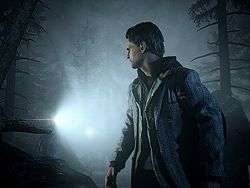 The words ‘Spoiler Warning’ can’t come emblazoned brightly enough at the head of this article than if they were daubed in luminous paint. As I found myself becoming more immersed in Remedy’s Alan Wake, the twisting story and the questions that it threw up began to impress themselves deeply on my mind, and it seems that I wasn’t alone. With the hooks, twists, and mysterious ending, Remedy have created another facet to their clever multimedia marketing with ‘Lost’ style debate and endless theorising spreading across the internet – ideas and debate which were too fascinating to be ignored, and indeed, much of which compounded and complimented many of my own theories and thoughts.
The words ‘Spoiler Warning’ can’t come emblazoned brightly enough at the head of this article than if they were daubed in luminous paint. As I found myself becoming more immersed in Remedy’s Alan Wake, the twisting story and the questions that it threw up began to impress themselves deeply on my mind, and it seems that I wasn’t alone. With the hooks, twists, and mysterious ending, Remedy have created another facet to their clever multimedia marketing with ‘Lost’ style debate and endless theorising spreading across the internet – ideas and debate which were too fascinating to be ignored, and indeed, much of which compounded and complimented many of my own theories and thoughts.
If you haven’t yet played or finished Alan Wake and intend to in the future, then I’m afraid you’d best wait outside the door because the point of this feature is to examine and explore the story, ending, and myriad of questions which have arisen. Spoilers are naturally a given. Providing that we can take them as legitimate pieces of the Alan Wake canon, Remedy have provided many elements to further deepen and expand the story, including the Alan Wake Files, Alan Wake Illuminated, and even the official strategy guide – most of which shed light while simultaneously complicating matters.
Whilst I don’t subscribe to many of the theories and interpretations, each is interesting in its own right and the legitimate ones are weighed up against what is factual (as far as is known), possible, and likely based on my opinion because, after all, until Remedy unzip their lips or more light is shed from the DLC, anything is just speculation and down to personal interpretation.
There are some predominant theories, variants, sub-theories, and more than a handful of questions about the game’s characters, events, and even timeline, (let alone the ending) which I will endeavour to explore. The beauty in exploring a twisting story is that in deciphering and untangling the scattered clues, over-analysing is almost a pre-requisite and missing the obvious or neglecting simplicity while the truth lurks, smiling at how you glanced over it, is inevitable. So, to start, and in order to refresh caffeine deprived memories or satiate those who have chosen, at their own risk, to ignore the spoiler warnings, here’s a brief recap:
‘Previously On Alan Wake’:
After suffering from writer’s block for two years, bestselling author, Alan Wake holidays in the small town of Bright Falls with wife Alice in a cabin on Cauldron Lake. Alice goes missing, and Wake wakes up behind the wheel of a crashed car, missing a week of time and with no memory of what happened. Trying to make sense of it all, he stumbles across pages of a manuscript entitled ‘Departure’, supposedly written by him, but which he has no memory of writing. Worse, the words are coming true, placing him in a nightmare of his own creation.
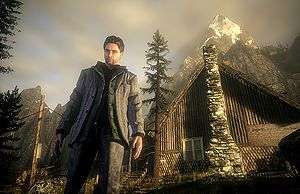 Cauldron Lake, is a special place with the power to bring words and artistic vision to life, letting them shape and alter reality. The dark presence which lurks in the depths seeks to use this for its own ends, and has, for the missing week, manipulated Wake, using the form of a woman called Barbara Jagger who convinced Wake that Alice had drowned and that the only way to save her was to write her back. After realising that the dark presence was manipulating the story for its own ends, to gain power, Wake writes himself into the narrative in a bid to escape and save Alice, freeing himself with the help of a mysterious presence in a diving suit – Thomas Zane.
Cauldron Lake, is a special place with the power to bring words and artistic vision to life, letting them shape and alter reality. The dark presence which lurks in the depths seeks to use this for its own ends, and has, for the missing week, manipulated Wake, using the form of a woman called Barbara Jagger who convinced Wake that Alice had drowned and that the only way to save her was to write her back. After realising that the dark presence was manipulating the story for its own ends, to gain power, Wake writes himself into the narrative in a bid to escape and save Alice, freeing himself with the help of a mysterious presence in a diving suit – Thomas Zane.
In the seventies, Zane was a poet, living in the cabin on Cauldron Lake where his lover, Barbara Jagger eventually drowned. Like Wake, Zane attempted to use the lake’s powers to bring her back by writing it so. What returned was merely a shell, filled with darkness and in realising his mistake, Zane desperately wrote Barbara and himself out of existence to try and stop the Dark Presence, leaving behind one powerful item as insurance in the hands of a woman called Cynthia Weaver. Wake finds Weaver and the weapon Zane left behind – the Clicker – a light switch used by Alan as a child to overcome nightmares, along with a manuscript page, mysteriously detailing its origin in Wake’s past.
Using the Clicker, Wake drives back the darkness, but to avoid Zane’s mistake, he has to create balance – sacrifice. When Alice surfaces from Cauldron Lake, she is alone and Wake remains trapped in the darkness, writing. Time winds back and then forward; the Deerfest parade happens as normal, though Rose the waitress, who was touched by the dark presence is standing with a lamp in her hands while FBI agent Nightingale, last seen being taken by the darkness, lurks in the shadows. Wake, still in the cabin somewhere in the darkness, is unable to stop typing…with a final moment of realisation that ‘it’s not a lake, it’s an ocean.’
Help Me Daddy
 Thomas Zane is Alan Wake’s father. Yes, why not start with the big one. It is fair to assume that, until the end of episode five, few would have perhaps considered this possibility. The Clicker and the manuscript page, left for 30 years in the hands of Cynthia Weaver (who also loved Tom) at once had tongues wagging. After all, how could Zane, writing 30 years ago, have known about Wake’s father giving him the Clicker when he was young, or that Alan suffered from a fear of the dark, or that everything of his father’s took on an almost ‘mythic quality’. Though he was in love with Barbara Jagger, we know nothing else about Thomas Zane prior to the cabin sinking beneath the waters in the seventies.
Thomas Zane is Alan Wake’s father. Yes, why not start with the big one. It is fair to assume that, until the end of episode five, few would have perhaps considered this possibility. The Clicker and the manuscript page, left for 30 years in the hands of Cynthia Weaver (who also loved Tom) at once had tongues wagging. After all, how could Zane, writing 30 years ago, have known about Wake’s father giving him the Clicker when he was young, or that Alan suffered from a fear of the dark, or that everything of his father’s took on an almost ‘mythic quality’. Though he was in love with Barbara Jagger, we know nothing else about Thomas Zane prior to the cabin sinking beneath the waters in the seventies.
It is a great theory, and admittedly leapt instantly into my head in chapter five, though there are, of course, counter arguments which hinge on individual interpretation of the bigger picture, i.e. ‘whose story is it anyway?’. If this interpretation is that Zane (in his entirety or as merely a helpful presence conjured by Wake) is solely a device of Wake’s writing, then the Clicker and the page would have no greater significance in the context of this theory.
Also the flip side of the coin, with Wake being the creation, is true of this. However, there are several things which lend the ‘Zane is the father’ case, some weight…not in the least that Wake’s father was never present in his life and nothing was known of him – because Zane wrote himself out of existence and therefore out of his son’s life. Also, the Anderson brothers refer to Wake as Tom; this could be down to senility and the cocktail of drugs that Hartman was pumping into them, (and also points to another theory – namely ‘Zane is Wake’), but if Wake is Zane’s son, then this would explain the confusion as, presumably, they would look similar.
 According to Clay Steward in the Alan Wake Files, Wake’s fiction reflects a deeper version of the author himself and his own fears and issues. “Repeated in Wake’s universe, stories of fractured father-son relationships, accounts of lurking evil, and of the hero’s dawning awareness of his predicament.” All of these things can be applied to this story, so it makes sense for the father/son thing to have meaning here also.
According to Clay Steward in the Alan Wake Files, Wake’s fiction reflects a deeper version of the author himself and his own fears and issues. “Repeated in Wake’s universe, stories of fractured father-son relationships, accounts of lurking evil, and of the hero’s dawning awareness of his predicament.” All of these things can be applied to this story, so it makes sense for the father/son thing to have meaning here also.
A suitably TV/film-like ending would be the father’s sacrifice to save the son. This is a strong story idea and has often been used to great effect, so why not here? After all, thanks to Alan Wake Illuminated, we know that Zane is, in fact, not dead, but that he instead exists in a similar limbo to Wake, trapped in the darkness.
In the final act then, Zane could conceivably sacrifice himself for his son, allowing Wake to escape while dooming Zane – similar to Wake’s short story, ‘The Errand Boy’, presented in its entirety in the Alan Wake Files. Even without the father/son element this is a juicy eventual conclusion, though the father/son argument lends it more drama, motivation, and impact.
Can You Hear Me, Major Tom?
Who is writing whom? With the two big theories, we have to question whether this whole thing, Wake included, is an invention of Thomas Zane’s, or whether Wake is writing it all, including creating Thomas Zane himself. We’ll start with Wake. For the most part, the question of who is really writing the story stems from the Clicker and Thomas Zane’s manuscript page. The conundrum that these things present lead us to question how Zane knew about Wake, his childhood, and the Clicker. While this is also where the theory veers off into the Zane track, we’ll stick with Wake for now and consider that the only explanation is that he wrote it all: Wake needed to escape the cabin, so in his words, he wrote in Thomas Zane to help him. Thomas Zane became part of the story because Wake made it so and his actions are purely those dictated by Wake.
However, there are difficulties with this…before Wake set foot in Bright Falls, Zane appeared to him in a dream to warn and prepare him for the dark presence waking. Unless Wake also wrote this in as backstory, it throws a spanner into the works somewhat. The ‘Wake created Zane’ train also branches off into the sub theories of Zane being a made up character all together and Zane being real, but merely having been used as a tool or plot device by Wake.
For Zane to have been a purely fictitious character created by Wake, he would also have to have created the whole backstory for Zane and Jagger, the notion of Zane being a local myth, the books found in the cellar, Hartman, Weaver, and the Anderson’s brothers’ memories of him, not to forget the mentions of Zane in a newspaper obituary for Barbara Jagger (Alan Wake Files). It seems a little much, though would at least explain away the page and Clicker, though at a cost of not a small amount of incredulity.
Stepping back for a moment, Remedy have also intimated that they have a substantial backstory for Zane which they haven’t touched on yet (AW Illuminated) since they discovered that he works best as a mysterious presence. It just seems like an awful lot of trouble to go to – creating a compelling and fascinating character just to relegate him to the role of puppet in someone’s story, or with his whole life and everyone’s memories of him mere fabrications.
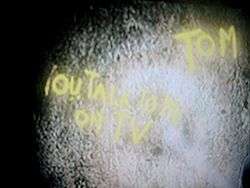 The same can be said of the ‘Zane is the writer’ theory though there are, again, plus points. ‘Zane as the writer’ also explains the Clicker and page problem away, as with the Wake side of the argument, since they would be constructs of Zane’s story – he would know everything there is to know about his protagonist, including his childhood talisman. The possibility that the whole thing could be his creation is not unreasonable, though it hits the same barriers as the Wake theory…namely with so much backstory and so many people interacting with the characters in situations removed from the events of the game, it is hard to accept that Wake is a totally fictitious creation.
The same can be said of the ‘Zane is the writer’ theory though there are, again, plus points. ‘Zane as the writer’ also explains the Clicker and page problem away, as with the Wake side of the argument, since they would be constructs of Zane’s story – he would know everything there is to know about his protagonist, including his childhood talisman. The possibility that the whole thing could be his creation is not unreasonable, though it hits the same barriers as the Wake theory…namely with so much backstory and so many people interacting with the characters in situations removed from the events of the game, it is hard to accept that Wake is a totally fictitious creation.
Ultimately it comes down to how far you want to believe that the writers have spread their fictitious net. Both Zane and Wake have interactions and evidence to support their existence outside of the events of the game, whether in the form of books, interviews, newspaper inches, or friends. If we were to believe that one is a creation of the other, then absolutely everything would have to have been made up too, the contents of the Alan Wake Files included where Clay Steward and Agent Nightingale are very much aware of Wake, and Nightingale has evidence of Thomas Zane’s existence. Though one of these theories may yet be proved right, the ideas do stretch things a little too far unless Remedy have some in-depth explanation reserved for a reveal.
Two’s Company
Both Zane and Wake are writing it. This may not be as outlandish as it first seems…indeed, in the AW Files, Agent Nightingale actually ponders at one point if there are two writers. It would get around the Clicker and page questions and explain away many of the things used to buoy up the opposing but similar Wake/Zane as the writer theories. In AW Illuminated, Remedy intimated that Zane is not dead:
“Stuck in the Dark Place, somewhere below and beyond Cauldron Lake, Thomas Zane still survives after all these decades. He has adapted to life in an environment that is alien and hostile to human life, and he’s helping Wake the best he can.”
So, if he is presumably alive and trapped as Wake now is, is it one big writer’s convention down there – are they working together or both writing independently? It is a fascinating idea and although there is little evidence to support it at this time, I can’t help secretly liking it.
Three’s A Crowd
Neither Zane nor Wake are actually overseeing events, but rather a third writer or artist is…one which we have just not seen and which hasn’t been hinted at. While this would be an extra layer of ‘headfuck’ and actually quite fascinating – fitting into the chain theory, it remains pretty unlikely unless the DLC or sequel makes some dramatic revelations.
Knowing Me, Knowing You
Zane is Wake. There are a lot of possibilities and questions surrounding the basic theory of this possibility and the intriguing variants which spring from it, for instance: Is Zane is re-experiencing or reliving the events from his past through the eyes of a character/creation of his or ‘another personality’? Is he caught in a terrible ‘chain’ where, in trying to shackle the dark presence, he has to repeatedly recreate those original events to try and get rid of it once and for all? Is he forced to relive the events over and over or is he destined to battle the darkness whenever it rises? Are these events that are playing out now, in fact, the actual events of the past under a different guise and with a different ending that he has somehow managed to create this time? And so on…
At the basic level at least, it goes some way to explaining the existence of the Clicker and manuscript page in the shoebox since, presumably, he has placed them there and is now playing out the events of the game as Wake (which also means that he has actually written the other pages…so Zane is writing that Wake is writing the events…). Arguments in favour of the basic ‘Zane is Wake’ idea, as with other pro-Tom theories are the Andersons and Jagger referring to Wake as ‘Tom’, the Clicker and page being in the box for thirty years, and the alarming parallels of current events to Zane’s life. There are a lot of holes though which can be argued with the same reasoning as with the other theories in this feature – namely that too much has gone into the characters; Wake exists outside Bright Falls and people interact with him in situations removed from the town and the events of the game unless we are supposed to assume that Zane has constructed this all too. (Meaning that Clay Steward and the Alan Wake Files would have to be fabricated also.)
One of the more compelling variants on the theory follows below:
The Papers Want To Know Whose Shirts You Wear
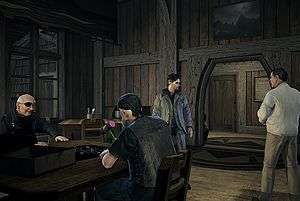 Thomas Zane is a schizophrenic/is suffering from a mental or multiple personality disorder and is currently residing in Hartman’s clinic. After the death of Barbara Jagger in Cauldron Lake, Zane broke down, unable to cope with the thought of losing her and constructed an elaborate fiction with similar characters – namely Alan and Alice whose lives suffer parallel tragedies….only in his story, Zane’s creation saves his wife, something which Zane himself was unable to do. Basically it is a fragile mind’s way of coping with loss, constructing a way in which she, or someone like her could be saved.
Thomas Zane is a schizophrenic/is suffering from a mental or multiple personality disorder and is currently residing in Hartman’s clinic. After the death of Barbara Jagger in Cauldron Lake, Zane broke down, unable to cope with the thought of losing her and constructed an elaborate fiction with similar characters – namely Alan and Alice whose lives suffer parallel tragedies….only in his story, Zane’s creation saves his wife, something which Zane himself was unable to do. Basically it is a fragile mind’s way of coping with loss, constructing a way in which she, or someone like her could be saved.
So, in theory, the Lake’s properties, the Taken, the dark presence could all be, along with Wake, figments of Zane’s imagination and part of his coping mechanism. This would explain why the Anderson brothers refer to Wake as Tom in the scene in the clinic, which itself, could have presented us with a moment of reality, with Hartman pandering to Zane’s mood or ‘current personality’.
As interesting as this idea is, and while I wouldn’t feel necessarily cheated should it bizarrely turn out to be the case, it is highly unlikely. Quite separate from Zane – according to the Alan Wake Files, Bright Falls has long been a hotbed of strange events, dating back hundreds of years – with reports of shadow men, odd disappearances, and ships being found miles inland as though dropped by some dark hand.
Could Zane have constructed such as far reaching elaborate life for Wake, stretching back to New York, along with people like Clay Steward who seems quite detached from the whole affair, and the dark history of Bright Falls? Arguably he could, given the thirty year period he would have to do so, given the fixation on the man he was creating who would save the woman that he loved. Would though, he have used his own lost love, Barbara as the central villain, even if only in skin form? Perhaps not. Not only that but everything else – Nightingale, Steward, and even the FBI would have to have been a construct and if we remove ourselves back to reality and, Remedy would not have created such a rich and detailed word, full of back stories and detail, only for it to be, essentially, a waste.
Mr Sandman…Bring Me A Dream
It could all be a dream, you say? Stop right there, get the hell out, and take your Dallas DVDs with you. After taking the time to construct a plethora of interesting and engaging characters, compelling histories and situations, and a thick, layered story, Remedy are hardly going to pull the rug out from under us with the cheapest cop-out trick since the gods descended onto Greek stages across Athens and claim that it was all a dream. The same thing goes for the almost as bad ‘Wake wrote it ALL…none of it really happened and he is back home in New York with Alice’ monstrosity.
Roses Are Read
 Rose is the new lady of the light. Out with the old then? If, as Cynthia Weaver says, that she wants to rest, having carried the burden of Zane’s insurance policy for thirty years, then this would be a smooth passing of the baton. Again, the parallels between Zane’s story and Wake’s are significant: Weaver’s unrequited love for Zane and her being the lamp lady, and now Rose, Wake’s biggest fan is seen carrying on the tradition. Last seen clutching a lamp in broad daylight at the Deerfest parade, it is an entirely believable notion. How well she will recover after being possessed by the darkness though is another matter but, having said that, we don’t actually know how Weaver came to have been touched by the darkness either…more questions.
Rose is the new lady of the light. Out with the old then? If, as Cynthia Weaver says, that she wants to rest, having carried the burden of Zane’s insurance policy for thirty years, then this would be a smooth passing of the baton. Again, the parallels between Zane’s story and Wake’s are significant: Weaver’s unrequited love for Zane and her being the lamp lady, and now Rose, Wake’s biggest fan is seen carrying on the tradition. Last seen clutching a lamp in broad daylight at the Deerfest parade, it is an entirely believable notion. How well she will recover after being possessed by the darkness though is another matter but, having said that, we don’t actually know how Weaver came to have been touched by the darkness either…more questions.
Turning And Turning In A Widening Gyre
An unending chain is an interesting idea and it occurred to me that there is a repeating story arcing through the decades which may not be limited to just Wake and Zane. Starting with Zane (as far as we know, anyway) and his life and writing…the torch, pardon the pun, had to be passed on…Zane wrote in elements of his successor’s life, perhaps even drawing him to Bright Falls, and the scene was set for the hand over.
Enter Wake and history repeats itself with Wake now controlling events, shaping reality and with Zane now relegated to the role of mysterious helper…and thus, the smooth passing of Zane’ story into Wake’s is complete. Weaver passes onto Rose, Jagger’s death becomes Alice’s, Wake becomes Zane. If we follow this path further, will there then be a third? Will the pattern be doomed to repeat? Was Clay Steward destined to be the third, but somehow escaped it? Did it happen before Zane? Will it happen again, over and over, or will Wake end it once and for all…or will he end up in Zane’s role in the story of another hapless author, drawn into the mesh of the dark presence, further down the line? Certainly something to consider and a strong contender for most reasonable solution.
Schrodinger’s Clicker
Or, the ‘Referent’. Like the battery acid inhaler from Stephen King’s ‘It’, the Clicker represents an all powerful object whose owner’s belief from childhood imbues it with an almost magical ability and power to destroy the darkness. The Clicker, however, poses a set of questions of its own and ties into several other theories, in particular the ‘Tom is Wake’s father’ theory.
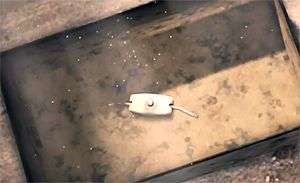 Left behind in a shoebox by Thomas Zane, in the care of Cynthia Weaver, the Clicker, according to the manuscript page written by Zane, was given to Alan as a small boy. Having belonged to a father that he had never known, it took on a mythic quality, helping drive back his nightmares. Years later, Wake gave it to his wife Alice to help her with her chronic fear of the dark. So…how did it come to be in Zane’s shoebox for the past thirty years? Are there two Clickers? How did Zane know about the Clicker, or Alan for that matter? It lends weight to the ‘Zane is Wake’s father’ theory but also to the idea that Zane wrote it all.
Left behind in a shoebox by Thomas Zane, in the care of Cynthia Weaver, the Clicker, according to the manuscript page written by Zane, was given to Alan as a small boy. Having belonged to a father that he had never known, it took on a mythic quality, helping drive back his nightmares. Years later, Wake gave it to his wife Alice to help her with her chronic fear of the dark. So…how did it come to be in Zane’s shoebox for the past thirty years? Are there two Clickers? How did Zane know about the Clicker, or Alan for that matter? It lends weight to the ‘Zane is Wake’s father’ theory but also to the idea that Zane wrote it all.
If Zane was indeed Alan’s father, he would know about both Wake and the Clicker, offering an explanation for the Clicker, though not how it came to be in two places at once, unless there were two…one in the box and one in the possession of first Alan, and then Alice. Also, if the whole thing, Zane included (whether completely fabricated as a person or merely his involvement being a fabrication) is written by Wake, then this would also explain it…Wake, after all, would have full knowledge of the Clicker. So, also lending weight to the ‘Wake wrote it all theory’. That’s cleared that up then. Not.
However, there are some fascinating theories which present the contents of the shoebox as ambiguous, in a manner which brings to mind ‘The Referent’ – a short story by Ray Bradbury about a being which is nothing and has no shape until someone defines it. Thomas Zane could have left behind something unspecified with which our hero could fight the darkness and this thing only took form when Wake used the box. This presents the fascinating quandary of whether the Clicker was ever actually in the box before Wake got to it, before it became ‘defined’. With the box tucked away, we have no way of knowing whether the weapon is or is not the Clicker.
 It is a compelling argument and makes sense, at once eliminating the two clickers problem and the ‘How Did Zane know about it?’ question – simply put because he didn’t…it could have been anything, depending on who found it – bashing down the ideas about fatherhood. However, the presence of the accompanying page somewhat dampens proceedings, (unless that too had the Clicker written as something which would only be defined when found) leading back to the idea that Zane/Wake is the overall writer and/or Zane is Wake’s father.
It is a compelling argument and makes sense, at once eliminating the two clickers problem and the ‘How Did Zane know about it?’ question – simply put because he didn’t…it could have been anything, depending on who found it – bashing down the ideas about fatherhood. However, the presence of the accompanying page somewhat dampens proceedings, (unless that too had the Clicker written as something which would only be defined when found) leading back to the idea that Zane/Wake is the overall writer and/or Zane is Wake’s father.
Regardless, the Clicker remains one of the game’s biggest mysteries and one which ties heavily into the other popular theories. Personally speaking I’m inclined to believe that it was always there, since the page supports this…even though this throws up some problematic questions as to how.
Planet Earth Is Blue And There’s Nothing I Can Do
It’s not a lake, it’s an ocean. Or rather, a metaphor, though there are people still questioning this on a literal level, suggesting that the sequel or DLC will be at sea in some way. Breaker herself said that Wake was heavy on the metaphors (and as a poet, it is a safe assumption that Zane was too). While the ocean does touch Bright Falls, it is almost certainly a metaphor for either the darkness or the power of the lake itself.
The dark presence presents a far greater threat than first thought. It appears, if we take Zane’s poem from Wake’s nightmare at the start of the game, that he tried to warn Wake of this…that there is an ocean beyond, something greater, deeper, far spread…a place to which Zane has been.
Paging Dr Hartman
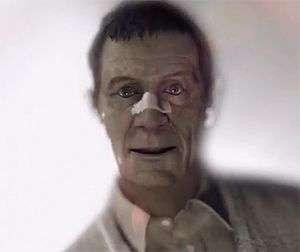 Hartman presents a somewhat odd oasis in the maelstrom of the main story. While debate rages about the true writer of the piece, what is real and what has been shaped, Dr Emil Hartman sits on the sidelines, waiting. Hartman and the clinic almost seem out of place and as such, it was hard to find the right place to slot this rather strange piece into the larger jigsaw.
Hartman presents a somewhat odd oasis in the maelstrom of the main story. While debate rages about the true writer of the piece, what is real and what has been shaped, Dr Emil Hartman sits on the sidelines, waiting. Hartman and the clinic almost seem out of place and as such, it was hard to find the right place to slot this rather strange piece into the larger jigsaw.
Hartman was Zane’s assistant years ago, and later became his editor. We know how he manipulates Wake and his other patients, and likely did Zane too. Indeed, someone else clearly thinks so, since the luminous graffiti daubed on the walls outside the clinic state rather chillingly that ‘Emil made Tom do it’.
Hartman is well aware of the lake’s powers and the effect that it has on artists and vice versa. However, in a cravenly manner, he uses others on the frontline, unwilling to put himself in harm’s way, having seen what has happened to others in the past. He seeks to manipulate the lake’s powers and gain control for some unknown purpose which is never learned. His minion Mott, intimates to Agent Nightingale (Alan Wake Files) that there is a ‘new system’ on its way. What was meant by this? Hartman is clearly trying to succeed with Wake where he failed with Zane, but how will he actually control the dark presence and what is his specific goal?
As an aside, he also clearly remembers Zane, just as Weaver does. How, since he too, would have to have been touched by darkness? Those who haven’t, don’t seem to remember Zane because he wrote himself out of existence. Hartman, last seen being ripped away by the dark presence, is not heard from again; we don’t encounter him in Taken form, nor is he present at the Deerfest parade. While many see Nightingale as the new face of the Dark Presence, (hinted at in the closing scene), Hartman is actually a far more chilling option.
Personally, I find Hartman’s history almost as mysterious as his fate and motives, especially in relation to Tom and Barbara. Could he have murdered Barbara Jagger? Was he trying to push Tom into stirring up the darkness of the lake – after all, this would be a good way of doing it? Barbara was reportedly (Alan Wake Files) ‘a very capable swimmer’ and if we rule out the fanciful suicide theory, along with the outlandish ‘Tom is evil and murdered her’ theory, then, other than a genuine accident, murder is a not unreasonable option. After all, Hartman did have a motive.
Who’s That Yonder Laughing At Me?
Mr Scratch…where to even start. Mr Scratch and who or what he is and what his purpose is, is perhaps a bigger issue for debate than even the Clicker or Zane and Wake themselves. All we know is that Zane presents a carbon copy of Wake to him at the end with the words ‘this is Mr… your friends will meet him when you’re gone’ The name was ‘scratched out’ in the audio, however, it reads as Mr Scratch on both the subtitles and the playback title. Even the name itself is a source of interest before we even get to the man(?) himself, since in New England folklore, Mr Scratch is another name for the devil.
While the name could simply be onomatopoeic, another more logical theory suggests that the name is literal: Mr Scratch is a ‘scratch copy’, a rough copy of something…namely Wake. Wake is trapped in the darkness writing, so Mr. Scratch is, in essence, a proxy – a puppet, or scratch version of Wake who will represent him in the ‘real world’ from this point on.
Or…is Scratch all of the above, but will actually enter the story from the point which Wake escapes the cabin and is in the car crash, meaning that we have, all this time, been playing as Mr Scratch? Opponents to this theory argue that this creates a paradox, since Scratch will end up with Wake at the end creating an infernal loop, unless of course, he is resorbed back into Wake at this point as an end rather than a beginning to his use as we are led to believe.
Another variant of the Scratch theory suggests that Wake sends Scratch back to steer Alice away from Bright Falls and the cabin…this however, presents a paradox in that if the events in Bright Falls never happen as we experienced them, then there is no fight and flight through the darkness, no Clicker, no defeating the dark presence, no Wake writing in a cabin at the end, and no Scratch in the first place….unless….the Doc Brown explanation kicks in:
Try to imagine the scene from Back to the Future 2, when Doc Brown is trying to explain to Marty why the 1985 that they are currently in, isn’t the 1985 that they remember… “At some point in the past, the timeline skewed into this tangent, creating an alternate 1985. Alternate to you, me, and Einstein, and reality for everyone else.” This, bizarrely, could apply. By winding time back and putting Scratch in his place, events could unfold differently and if that is indeed the case, only those touched by darkness – Wake, Nightingale, Rose (we currently have no idea about Weaver, Breaker, and Wheeler, or even Alice at this point, though most are alive from the accounts in the AW Files) – remain with the memories of what was.
To me, if we are to seriously consider the idea that Scratch was created to lead Alice away or alter events so that they never unfolded in this manner, then this seems the only way things could be explained in a credible manner, (given the little that we have to go on) and to avoid the paradox, while retaining the lead characters’ knowledge of the former train of events. This theory could conceivably be imported into the other Scratch theories too, since we are unsure at this point what is reality and what isn’t or what actually did or did not happen. The clock winding back and time moving forward has created a lot of headaches and debate as to the timeline and reality, let alone the role Scratch has or has yet to play.
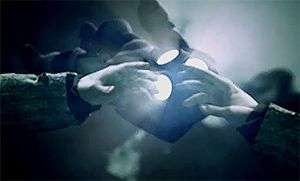 The Mr Scratch theory wagon trundles onwards, with some making much of the devil reference, inferring from it that Scratch is evil or otherwise a ‘bad version’ of Wake. His odd grin is seen by some as indicative of evil, though it can be argued that this is merely a vacant look from a puppet whose purpose hasn’t yet been written. For others, Scratch is secretly Tom Zane, inhabiting the body and using it to escape the darkness, though being bound into someone else’s story isn’t much of an escape…Tom presumably would have more power where he is, rather than being Wake’s puppet.
The Mr Scratch theory wagon trundles onwards, with some making much of the devil reference, inferring from it that Scratch is evil or otherwise a ‘bad version’ of Wake. His odd grin is seen by some as indicative of evil, though it can be argued that this is merely a vacant look from a puppet whose purpose hasn’t yet been written. For others, Scratch is secretly Tom Zane, inhabiting the body and using it to escape the darkness, though being bound into someone else’s story isn’t much of an escape…Tom presumably would have more power where he is, rather than being Wake’s puppet.
Up Jumped The Devil
When did Thomas Zane become evil? If you’re as non-plussed as me, then have a seat. It seems that until Mr Scratch was revealed in the closing scenes of the game, this wasn’t a consideration. However, after Wikiing Scratch and discovering his affiliation with the devil, some fans have drawn the conclusion that Scratch is evil, meaning Tom must be too, after all, Zane is freely letting him loose.
Presumably Tom’s nefarious plans involve a sudden siding with the dark presence or otherwise using Wake to secure his own freedom at Wake’s expense – whether this is by some plan we don’t yet know of, or by using Scratch himself, there is little to support it.
While the underlying idea is interesting, manipulating events so that he might place Wake in his trapped shoes and step out in Wake’s, it is highly unlikely. Why would Zane help Wake all this time instead of just manipulating him into writing in his actual freedom? It has even been suggested that Zane drove Jagger to suicide or even killed her for whatever reason, though an affair with Cynthia Weaver has been bandied about (and if that wasn’t too ‘soapy’ for you, it goes on: he and Weaver had a secret love child, namely Alan Wake, which drove Jagger to suicide). Seriously.
Pulling back to the straight and narrow a moment, while it isn’t unfeasible that a ‘kindly’ benefactor could be manipulating someone for hidden, evil purposes (Hartman, anyone), it seems a bit ropy and up until this point, we have no basis whatsoever to suppose that Tom Zane is evil or will turn out to be a Scooby Doo villain other than a tenuous connection to a New England bogey-man, so for me, at least, this is easily dismissed.
The Ballad Of Clay Steward
If the main story wasn’t enough, cue Clay Steward and the Alan Wake Files which seem to present a contradiction to the happy events witnessed in the closing of the game, in that Steward reveals a broken town in the aftermath of Wake’s fight against the darkness. He arrives to find multiple funerals with empty graves, folk in mourning garb, missing people, and walls peppered with bullet holes. Where then do the Alan Wake Files come in? We are honour bound to take the game as our primary source, especially since the files were only available to those with the collector’s edition, though they are compelling.
 Perhaps I am mistaken in presuming that the events of the game haven’t touched the town (judging by the cut-scene of Deerfest)? Have things altered around all but those touched by the darkness as discussed previously? This is where the timeline of events and whether they now ever happened at all play a huge part and confuse matters. Steward’s account of the devastated town and attitude of the locals fits perfectly into the timeline of the tragic events at Bright Falls really happening, but doesn’t fit with the happy town atmosphere seen with the parade unless I have misinterpreted. Could his account fit the original timeline, before Wake wound it back and perhaps altered it using Mr Scratch? It would appear to pose a small puzzle.
Perhaps I am mistaken in presuming that the events of the game haven’t touched the town (judging by the cut-scene of Deerfest)? Have things altered around all but those touched by the darkness as discussed previously? This is where the timeline of events and whether they now ever happened at all play a huge part and confuse matters. Steward’s account of the devastated town and attitude of the locals fits perfectly into the timeline of the tragic events at Bright Falls really happening, but doesn’t fit with the happy town atmosphere seen with the parade unless I have misinterpreted. Could his account fit the original timeline, before Wake wound it back and perhaps altered it using Mr Scratch? It would appear to pose a small puzzle.
Steward himself is interesting in his own right. He is drawn to Bright Falls after a series of nightmares in which Alan Wake brings about a terrible darkness which smothers Bright Falls and eventually the world; nightmares in which he or Wake always die and which we actually play out at the start of the game. He drives to Bright Falls to investigate, arriving to find the town in the aftermath of the game’s events. His subsequent investigation has mixed results: on the one hand, the locals and Barry Wheeler refuse to speak of Wake or the events which befell the town, and on the other, Steward discovers Agent Nightingale’s dossiers and files stashed in an air vent at the Majestic Motel (incidentally, you can actually see these in-game, poking from the vent in the motel room). The files are interesting and hint at Nightingale having also been drawn to Bright Falls by Alan Wake, certain that somehow, he will be responsible for something terrible.
In fact, the Alan Wake Files are crucial in the fleshing out of Agent Nightingale, of whom we learn little in the game and gives hints about a town cover up and an ongoing FBI investigation into an ‘unrelated matter’. Steward concludes his investigation and upon leaving Bright Falls, the nightmares stop – somehow having been laid to rest. As a way of leaving behind that part of his life which consumed him, Steward, in a surprising and perhaps telling move, throws his dream diary into the lake. This offhand action could well have great underlying significance. We know that the lake can bring words to life, using them to shape reality…could Steward’s dreams have been made manifest by the lake’s powers? Those dreams, in which he saves Wake, or Wake saves him and they both die and in which the world is eventually taken by darkness…did Steward cause them to happen? Did he cause all of the events to happen? How would this work is an issue – after all, the diary is thrown into the lake after the events in Bright Falls and not before. Another mystery.
FBI agent Nightingale is another of the game’s enigmatic characters. From the Alan Wake Files, we know that he was no longer an FBI agent, having suffered a mental breakdown at the death of his partner. In fact, the files shed more light on the man than the game does, with Steward almost defending Nightingale and his actions, due to the extreme pressures that the agent was under.
Through Nightingale’s hidden notes, Steward finds that, like himself, Nightingale was also drawn to Bright falls and Alan Wake, by something unknown, suggesting that the agent has a greater knowledge of events than we first thought. Presenting the man as more than just a trigger-happy drunken mess, Steward paints Nightingale as genuinely fearing for the wider world, certain of the danger that Wake poses.
Nightingale is clearly antagonistic from the off towards Wake, but why? Did he also experience the same sort of nightmares as Steward, which somehow twisted his and Wake’s fates together, or did he see something worse happening? Unfortunately, Nightingale’s abrasive approach doesn’t go down too well with the small community and his investigation is hampered according to Steward. Whatever prior knowledge or fears that he held with regards to Bright Falls and what he feared Wake’s actions would result in, we don’t know, but with him and Steward playing larger roles than we first thought, it adds another intriguing layer to the story.
While Steward was able to escape Bright Falls, Nightingale’s fate remains unknown, having been devoured by the darkness. Although he is seen in the close of the game, he is still missing in the Alan Wake Files, so is Nightingale the new Barbara Jagger – the new shell for the darkness to use? Could his appearance in the end sequence merely be as one of the ‘walking wounded’ that Steward describes, unable to bear the light? If this were the case, Clay Steward would surely have located him; the fact that he didn’t points towards the conclusion that the obvious was perhaps just that and Nightingale is intended to be the new antagonist. However, in the commentary on the bonus disk, one of the Remedy team refers to him as ‘alive’ (though in what context we don’t know) and that they are looking forward to doing more with him, so it is hard to know what, exactly, to make of his fate.
Though I’ve explored many ideas, there are always more: It’s all an episode of Night Springs or the Night Springs Xbox game, it is all a metaphor for Wake’s writer’s block, it was all caused by Clay Steward’s dream diary, and more, though I couldn’t possibly cover them all, so I’ve just concentrated on the primary ones, or those which were especially intriguing. However, when all is said, done, and written, many unanswered questions remain:
- What is or was Clay Steward’s role in the events at Bright Falls and does his throwing the dream diary into the lake have any significance or impact?
- What was Agent Nightingale so afraid of Wake doing and how was he drawn to Bright Falls?
- Where is Agent Nightingale now? Is he the new face of the dark presence?
- Is Rose the new lady of the light and if so what has happened to Cynthia Weaver?
- Where is Alice Wake? Steward was unable to locate her, yet we saw her saved.
- Where is Mr Scratch now? He certainly isn’t present in the Alan Wake Files, unless we count the mysterious sighting of Wake in the woods.
- What is Scratch and have we been playing as him all along?
- Is this Wake’s story or Zane’s or both? Is there another, third writer, blending them both together?
- What happened to Dr Hartman?
- What was Hartman’s grand plan and the new system that Mott boasted of?
- Did Hartman kill Barbara to manipulate Tom Zane into stirring up the darkness?
- How did Barbara Jagger drown? She was a good swimmer.
- How does the aftermath detailed in the Alan Wake Files fit in with the game’s ending?
- If the events of the game didn’t happen through some re-writing or Scratch’s intervention, then how did the story get to where it was in the first place?
- Are there two Clickers? Does Alice Wake still have hers and if so, will it be important?
- How did Zane know about the existence of the Clicker 30 years ago?
- Is Thomas Zane Alan Wake’s father?
- Are the townsfolk hiding something about the lake/dark presence?
- What is the unrelated matter that the FBI are investigating?
- Will Alan Wake ever escape the darkness?
Last but by no means least…is perhaps one of the most important questions and one which only Barry Wheeler can answer: What happened to the cut-out? Did it make it okay?
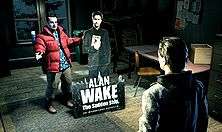 The ideas and variants are manifold, however, I believe that I’ve explored the main questions…I have my own conclusion, just as I’m sure others will have theirs along with their own pet theories and hopes. As ever, sometimes the answers turn out to be the most simple ones or those which stared us in the face all along. They often aren’t the most dynamic or convoluted, and our over analysing or barking up the wrong tree can lead us far in the opposite direction while the writers enjoy watching us chase our own tails.
The ideas and variants are manifold, however, I believe that I’ve explored the main questions…I have my own conclusion, just as I’m sure others will have theirs along with their own pet theories and hopes. As ever, sometimes the answers turn out to be the most simple ones or those which stared us in the face all along. They often aren’t the most dynamic or convoluted, and our over analysing or barking up the wrong tree can lead us far in the opposite direction while the writers enjoy watching us chase our own tails.
Ultimately, it speaks volumes for the story and characters that people have immersed themselves so deeply in trying to work it all out. Perhaps we want to see more when there really isn’t any great mystery. Still, Remedy have created a compelling story and set of characters which endure after the game ends, for everyone who feels a connection to the game, they will have their own thoughts.
For me, Thomas Zane is both the heart and the key and the more tragic character of the piece. His story is both fascinating and terribly sad. When it was over, my grief lay more with Tom, the more I thought about it all. After all, Wake saved the woman that he loved; Tom lost his and sacrificed himself to a darkened limbo to pay the price for his ill-fated attempt to save her. Not only that, but this once famous, respected writer unravelled his whole life, erased himself to try and stop the dark presence…all his work, gone, his name nothing more than a legend, a few books in an old shoebox, and a tightly held memory of an obsessive woman who remained devoted to him.
While my great empathy for Thomas Zane may colour my own conclusions towards the Zane theories, I am inclined, despite my leanings, to believe that Wake and Zane both exist, and are both shaping events in their own ways, whether by writing or some other influence. And if, as I once heard in a Columbo episode, that the story of a hero with a tragic flaw traditionally ends in death, I suspect that should the Zane/Wake father theory be borne out, then Zane will ultimately perish to save Wake.
Remedy aren’t ready to spill the beans just yet, and their layered, labyrinthine story has a long while to run (we hope), so our questions and feverish theorising won’t be answered anytime soon, if ever – we’ll just have to wait for them to dip their toes back into the darkened waters and stir some of the answers to life.
Last five articles by Lorna
- Flagging Heart
- Where Have All the Hours Gone?
- I Heart... Overlord
- Life Goes On: Done to Death - Review
- Welcome to Spoilerville, Please Despise Your Stay















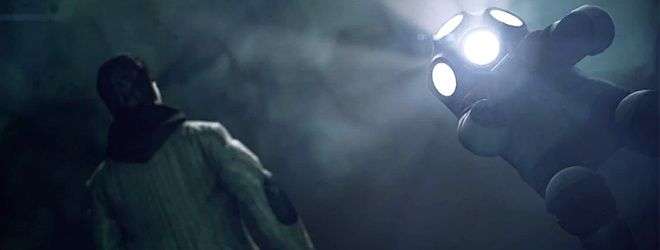
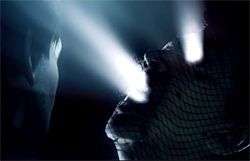
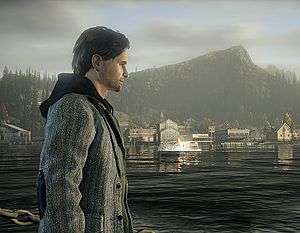

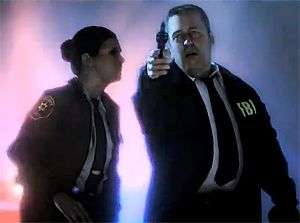

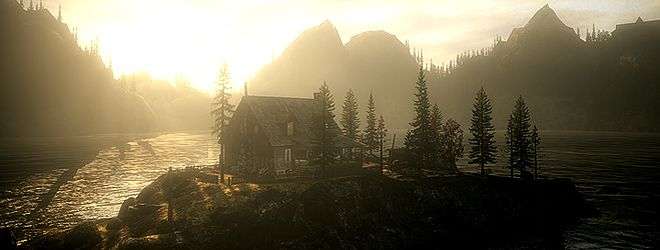





Argh I still can’t read it as I want to complete the game first!
This thing is huge! That’s what she said. I still swither between playing Alan Wake or leaving it on the “some day, perhaps” pile… so even though I find all this remarkably intriguing, as one who used to be keen on conspiracy theories before Matt Bellamy had even heard of X-Files, I’m not sure if it’s enough of a draw to pull me in to the game. Having said that, I DO yearn to play something more immersive in the new year and I’ve got Amnesia to get stuck into so I may go from that to Alan Wake. Remarkable amount of research went into this though, and I agree with Samuel that it’s probably the best article on the site.
I’m definitely finishing this game in the new year when I get home. Downloaded the second DLC in the Christmas sale and everything.
This article is still as bloody impressive now as it was the first time around. I strive for attention to detail and good research, but I’ve not managed to approach Lorna’s efforts in this article.
Thanks once again for the very kind words folks, very much appreciated as ever. This article was a real labour of love for a game that I became, and still am, very attached to. It appealed to me on many levels and in the end, I felt compelled to write this, as long as it ended up being! It was all bouncing around in my head and in the end I just gave in – I am glad that I did, as I think it is the piece of games writing that I am most proud of. Now I just hope for a sequel because I’d hate for all these questions to go unanswered.